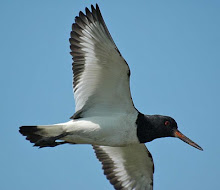Until last year we had a large patch of this Iris unguicularis growing outside our back door, between the house wall and the path - a sunny, well drained, south-facing spot that suited it perfectly and guarateed plenty of flowers from Christmas onwards. This photo was taken in January last year, after a sleet shower, when the plant was blooming in the thawing snow. Soon after that I dug it up so that I could relay the path, and divided the plant, and there's no sign of flowers yet this year, which is a shame. It comes from North Africa.
You can appreciate the primrose fragrance if you bring the flowers indoors, although they only last for a day. Iris unguicularis (also known as Iris stylosa) is a delightfully delicate winter-flowering Iris but it was always hard to find blooms as perfect as this one to photograph. Snails hibernated in the dry leaves that accumulated at the base of the plant and often began to nibble the flowers even before they opened. The dry leaves were also favourite nest material for field mice.
Every year I plant pots of Iris danfordiae so that we can enjoy their vivid but short-lived flowers in the conservatory in late winter. Then I transfer them into the garden, when the bulbs produce numerous smaller bulbs that take years to reach maturity and only flower sporadically. I must have transplanted a couple of hundred into the garden, but never see more than a handful of flowers every year. It comes from Turkey.
When it comes to spring-flowering Irises, this is my personal favourite - Iris bucharica which comes from Central Asia, growing in high altitude areas of Afghanistan, for example. I have tried it outside in the garden a few times but it never thrives here, perhaps because the garden is too shady, but in pots it produces a fine display of beautifully fragrant blooms in March, and for my money it's a far superior container-grown Iris to the ubiquitous I. danfordiae.

















